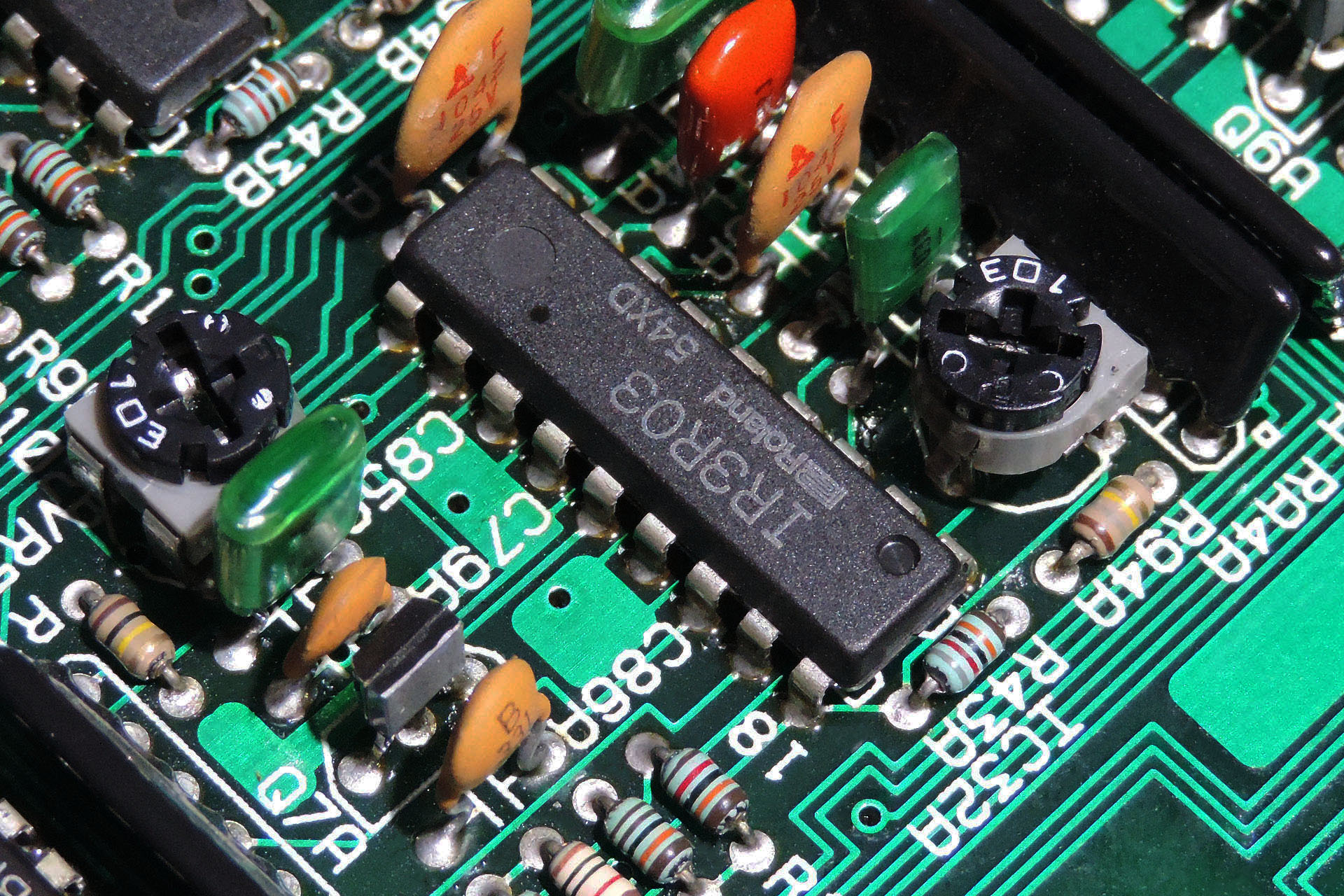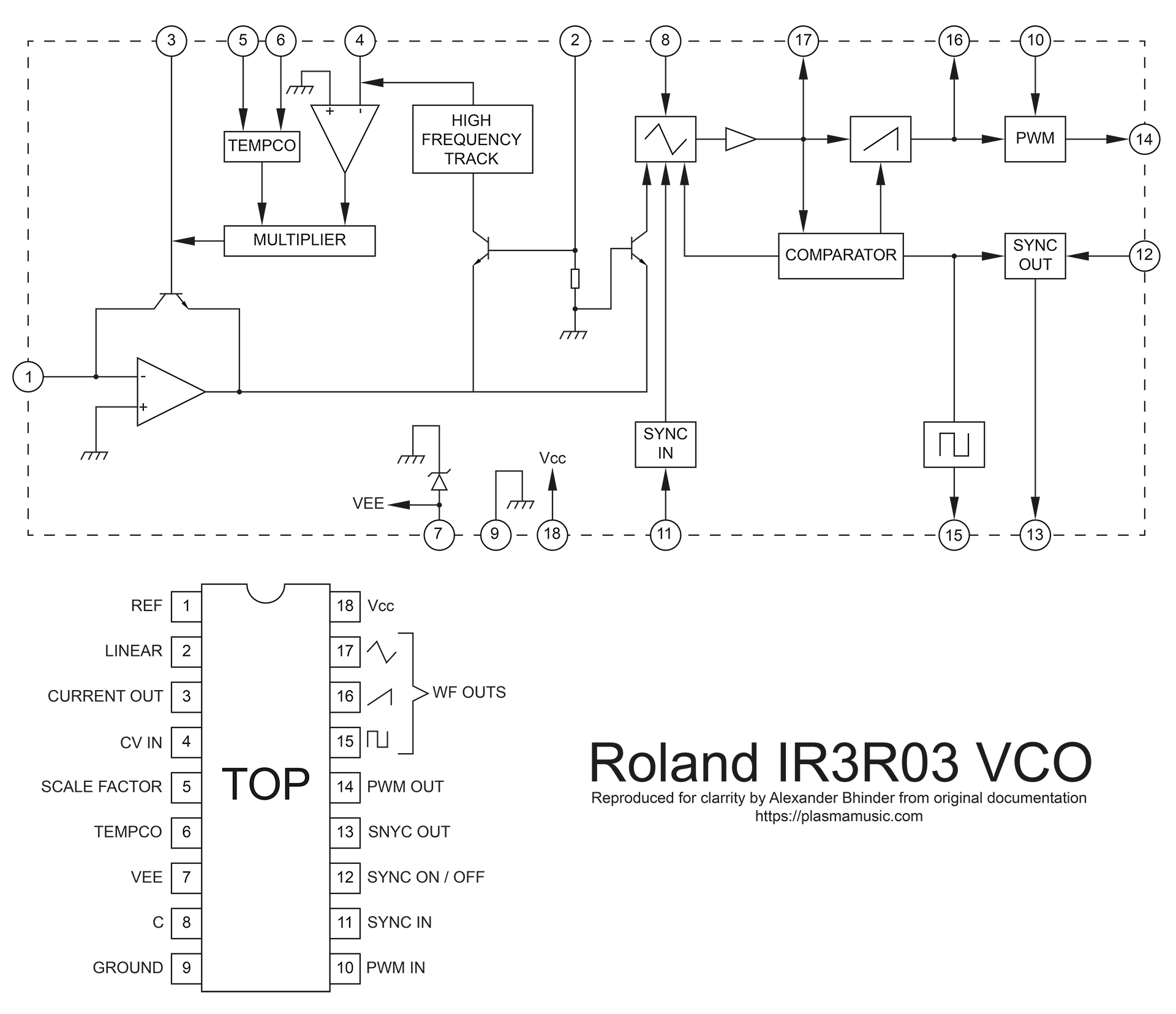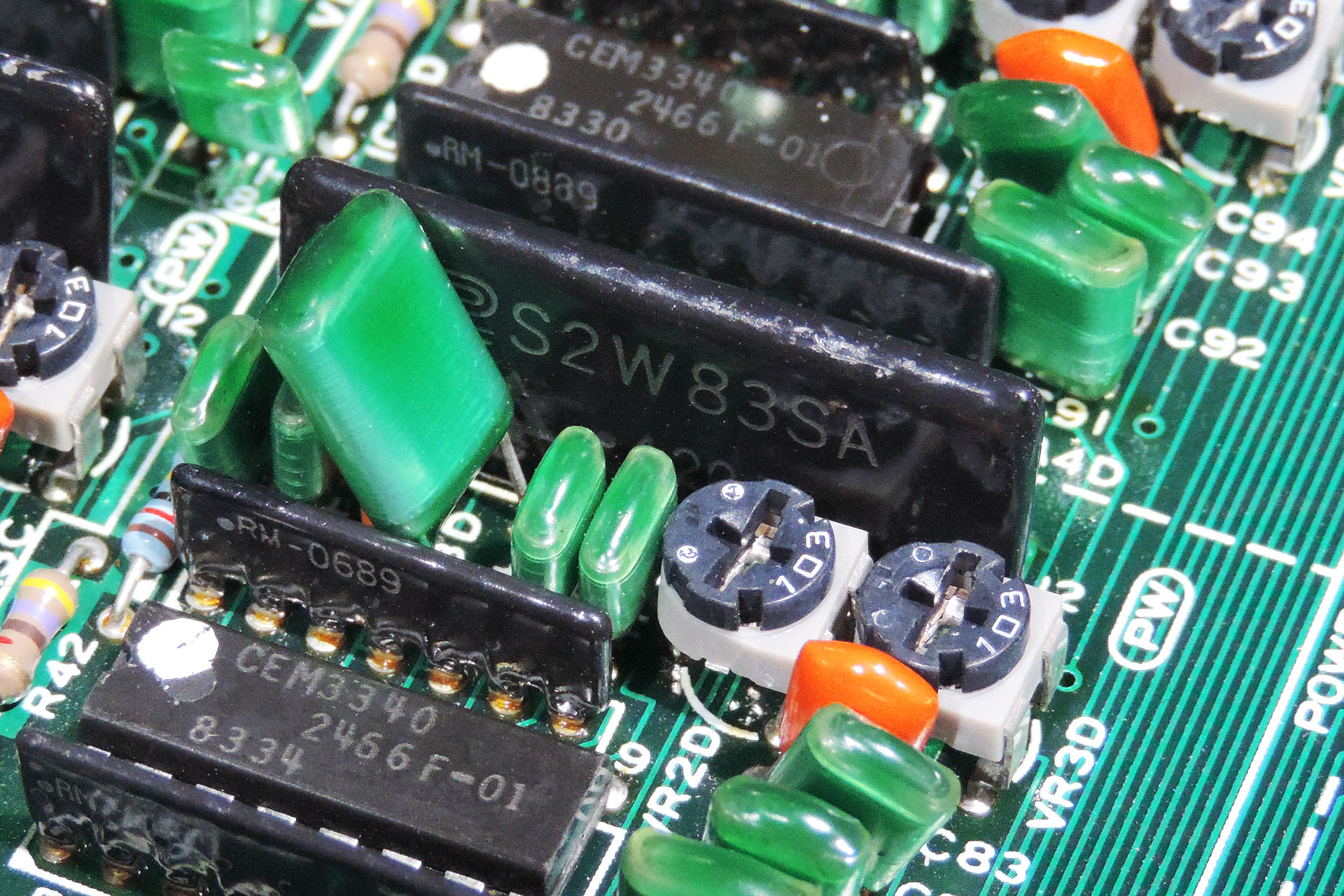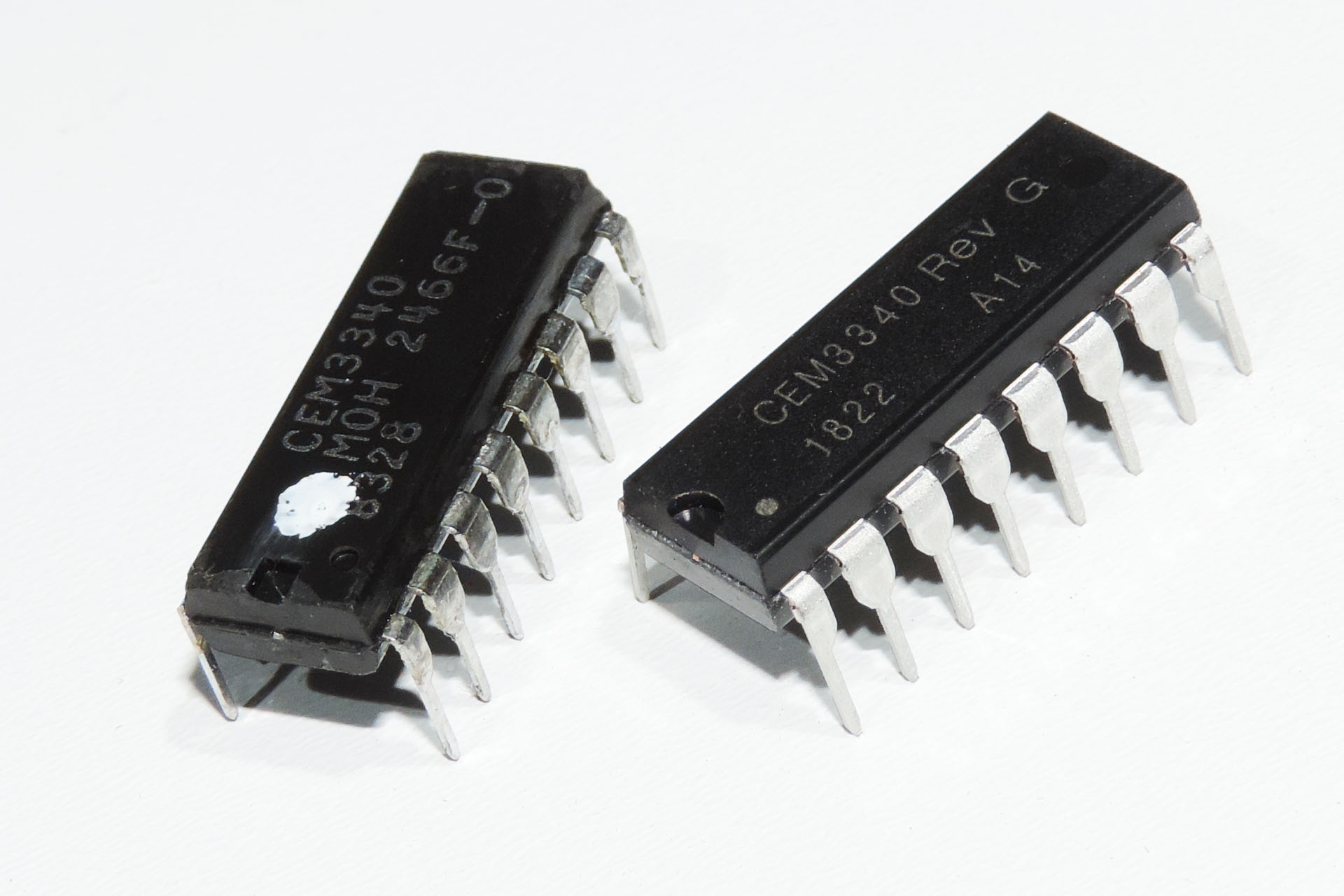
There are several differences between the Roland MKS-80 Rev 4 and the Rev 5, undoubtedly the most significant being that the former used the Curtis CEM3340 VCO while the latter used Roland's own IR3R03. Perhaps the other differences are as a result of this change.
Curtis Electromusic re-released their CEM3340 in 2016. The new device is known as the CEM3340 Rev G and information on it is readily available. Here's the data-sheet available on the Curtis Electromusic website. Unfortunately, the same can't be said of Roland's replacement and I was only able to find a single resource, on-line. Being the size of a postage stamp, I decided to knock up this version (pictured below) for anyone who might need a little help with a faulty MKS-80 Rev 5 or who just wants to know how this thing works.

From my own experience, the Roland IR3R03 seems to be a little more robust than the Curtis device and I find it quite frustrating that people assume a duff chip when fault-finding a problem on a Rev 5. Before you do that, please check out other stuff like capacitors (hint, hint).
You can download a pdf of the above image here.
Over the years, I've heard several theories as to why Roland developed its own VCO but it should be noted that the IR3R03 wasn't just a replacement for the CEM3340. It also removed the need for Roland's infamous EHM-S226W83S; the so-called hybrid chip which was used to synchronise the Curtis VCOs. The IR3R03 also reduced the number of components that comprise the cross-modulation circuit.
Doing all that, you'd be forgiven for thinking that the voice-boards in a Rev 5 should look a little sparse compared to its predecessor. NOPE! The insides of both versions bear an uncanny resemblance to what was under the bonnet of my first couple of Jags!

If you're not technical or simply don't want to open up your MKS-80 to find out which revision it is, then it's pretty easy to suss things out from the serial number. According to the second edition service notes of April 1985, the revision changed after serial number 511800 (inclusive). So, if your serial number is higher than that, you've got a Rev 5.
Okay, so the whole point of this post was to host the IR3R03 spec' sheet that I knocked up but... ya' just know that people researching the CEM3340 are going to have this page pop up somewhere in their search results.
I've already mentioned that Curtis re-released this very famous chip so there's actually a lot of information already out there but it might not tell you the answer to this question: What's with the white dot? Just about every MKS-80 Rev 4 I've ever opened up has 'white-dot' CEM3340 inside. Each chip has literally a white mark on it.
Well, Roland actually graded a lot the chips as they came in from various manufacturers and the CEM3340 was definitely no exception.
According to Roland's service bulletin 100248 and without going into too much detail, the white dot CEM3340s had better low frequency response and linearity than the CEM3340s that were marked with a red dot and I bet you didn't even know that there were red dot CEM3340s.
Mind you, I don't think I've ever seen red Tipp-Ex, LOL. 🙂

So the next question would be;
“If I need CEM3340s replaced in my MKS-80 Rev 4, is okay to use the re-released version? Do they sound the same as the Roland white-dot chips?”
That’s actually two questions but…
You know I previously used the term “without going into too much detail”? Well perhaps there’s a couple of points which I should mention;
Roland did NOT actually specify white-dot CEM3340s for the MKS-80! The specially graded chips were destined for machines like the SH-101 and Jupiter-6.
The other point I need to make is that chips weren’t graded to make certain models sounds better but for the following reasons:
- Testing devices supplied from other manufacturers prior to fitting reduced the number of faulty units that came off the production line. You have to remember that this was the beginning of the eighties. When I was at Simmons, we had horrendous problems because we didn’t do that!
- The use of graded devices meant that the set-up time of machines after production was greatly reduced.
Both of those reasons meant that Roland could keep costs down.
Now then, comparing the CEM3340 Rev G with the original white-dot Roland graded chips isn’t something I’ve gone out of my way to do, suffice to say however, that I have refitted many MKS-80s with Curtis’ newer version and I’ll be damned if I can tell the difference! Others have done comparisons. Check out Gregory Cox’s video on the Synthtopia website.
So there you have it. I started writing a post about the Roland IR3R03 and half of it is about the Curtis CEM3340! I think I need to focus more...

